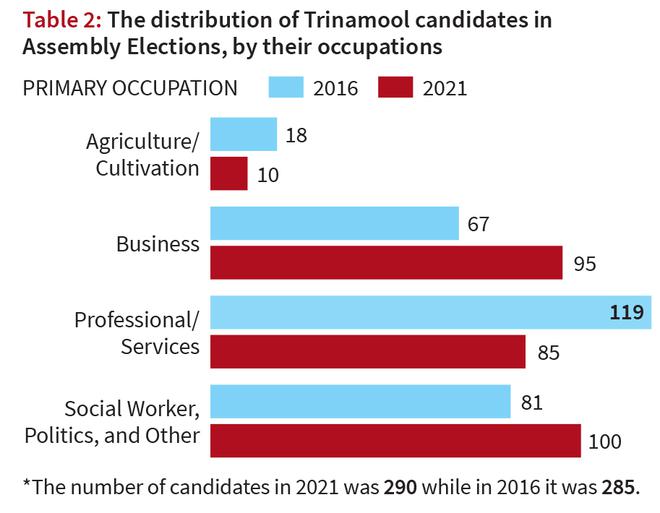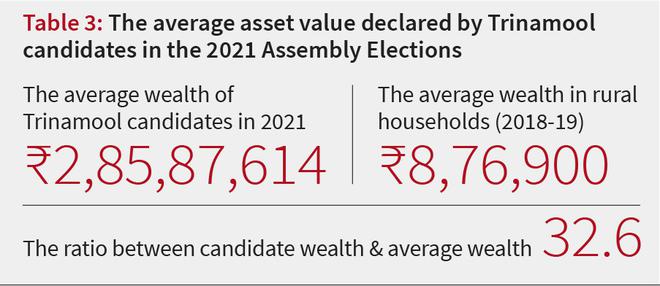As panchayat elections are nearing in West Bengal — voting is on July 8 — three streams of political discourse are becoming more and more apparent across different platforms. The first stream often reiterates the inevitability of the Trinamool Congress retaining its majority despite several corruption and criminal charges against members of the leadership in recent times. This line of discourse primarily banks on the large-scale cash-transfer schemes and the ‘incorruptible’ public image of the Chief Minister.
The second discourse acknowledges the recent win recorded by the Left-Congress alliance in the recent by-election (it is another matter that the candidate has since joined Trinamool) and other local body elections while dismissing their chance at becoming a harbinger of change at the larger electoral level. This is partly due to the previous Assembly Election performances and more importantly a critique of the Communist Party of India-Marxist (CPIM) led Left Front being a party of ‘old-veterans’.
The third stream that is doing the rounds still hopes that the Bharatiya Janata Party (BJP) could be a game-changer and could stand up to the alleged violence and cut-money culture that Trinamool is often associated with. However, this stream of discourse is getting quieter because of the regular in-and-out migration of political leaders between the Trinamool and the BJP. Therefore, at this juncture, the BJP might be considered to be in an incapacitated condition within the political arena of West Bengal. In this article, we will focus on the changes that have occurred in the rural economy of West Bengal during the last decade, and how those changes have shaped the political formations for both the Trinamool and the Left. This might provide a deeper understanding of the first and second discourses that we have mentioned above, and take the discussion beyond the tiring binary rhetoric of ‘Trinamool’s cash transfer worked’ and ‘CPI(M) is old’.
The crisis of income in agriculture
For an analysis of change in class structures, the first characteristic of rural West Bengal that stands out is a gradual, secular process of households losing land — of de-peasantisation and subsequent proletarianisation. And as per succeeding reports of the National Family Health Survey, this proportion has steadily decreased. According to the NFHS-5, 2019–21, over 65.2% of all rural families in West Bengal do not own any agricultural land. The most recent Periodic Labour Force Survey (PLFS, 2020) before COVID classifies less than a quarter (24.1%) of all rural households as self-employed in agriculture (that is, whose primary source of income was self-employment in agriculture) — a broad requirement for being classified as a peasant household. This is a minor increase over the 19% estimate provided by the most recent NSSO Employment Unemployment Survey (EUS 2011–12). Furthermore, 95% of the operational holdings in the State have fallen below one hectare. This means the subsequent fragmentation of land parcels have made the average size of operational holdings 0.35 hectares in 2018-19. This is quite low compared with the all-India average. With the rising cost of cultivation (partly attributed to irrigation costs) and the lack of price realisation, the average income from crop and livestock cultivation has become minuscule when seen in terms of its share in total household income in the villages. In the recent round of the Situation Assessment Survey (2018-19), it was seen that, in nominal terms, a typical agricultural household in West Bengal earns ₹1,547 from crop income per month which is 22% of the total household income. The all-India average for the same would be ₹3,798. The sheer crisis of income does indicate that there must lie a possibility of Left-led peasant movements. While there are a few pockets where one witnesses such protests, a consolidation is not observed. This is perhaps because of two reasons. First, more than half of the class base of the peasant organisation, which are the self-employed persons in agriculture, are now above 45 years of age. Second, perhaps more importantly, crop income is only one of multiple sources of household income. The most important source of income for this semi-proletariat section in the State has become wage income. Of the total household income, 55% is now accrued from wages.
Only a consolidation of the proletarianised small peasants and landless manual workers into a rural-worker movement could revive the traditional class politics that the Left, and more importantly the CPI(M), in the State have been associated with. Without such a consolidation, a shrinking and aged peasantry won’t be able to turn the electoral site in favour of the larger call for reviving a leftist spirit of politics.
Employment sources in rural Bengal
While unemployment did rise in West Bengal between 2011 and 2020, it was a common phenomenon across India. What remains of importance in the case of West Bengal is the structurally changing work-site for the workforce. A decline in manufacturing workforce certainly creates challenges for organisations such as the Centre of Indian Trade Unions (CITU) to bring class questions to the forefront. Additionally, since 68% of rural working women are still engaged in activities such as household care and reproductive labour in the State, Trinamool could generate some amount of electoral clientele within the female voters through cash transfer schemes etc.

With a decline in the scale of employment in both agriculture and manufacturing, the sectors that have generated employment are the construction and services sectors. However, the nature of employment is entirely different in both these sectors, and are related to the economic outlook of the policies undertaken by Trinamool. More than 90% of the construction workers in the State are casual wage workers. In 2019-20, 61% of service sector workers were self-employed, which in simple terms mean they are petty service providers fending for themselves due to distress in general. The rest of the 34% salaried service employees, who were earlier largely associated in the political discourse with the so-called ‘Left party society,’ have been carefully sidelined from rural political discourse. This ‘Left-party society’ was often identified with the educated middle class who managed party tasks while being engaged in government services such as school teaching, public sector employment etc.
The neo-rich business class
The Trinamool has also created a ‘nexus of corruption-syndicate-crime’ which has now been highlighted in every platform including the judiciary. This process gathered momentum in their second term (2016), where a nouveau-rich class, particularly engaged in real estate and several other local businesses, was promoted to the role of high-profile party organisers and became the core managerial elements in the Trinamool party. The recent corruption charges against certain Trinamool leaders such as Anubrata Mondal and alike would be exemplar of this class who are engaged in the ‘extraction of public resources’ by scam and corruption. This section plays a crucial managerial role in the electoral and day-to-day activities of the Trinamool party. If we take the election affidavits of the Association for Democratic Reforms for the last two Assembly Elections in the State, we observe a little more than a 40% rise (from 67 candidates to 95 candidates) in Trinamool candidates with ‘business’ as their primary occupation; and a decline of roughly 45% (from 119 to 85) in candidates under the professional/ service category.

The inclusion of the neo-rich business class becomes obvious, when one looks into the asset declaration data of Trinamool candidates.

The average asset ownership of the Trinamool candidates was almost 33 times more than the average asset ownership of rural households in the last elections. This is the effect of the inclusion of the rural nouveau-rich, which is different in character than the earlier ‘left-party society’. It also reflects that their political managerial character is largely extractive in nature and has created a havoc of corruptive practices within the State.
In conclusion
What seems to be of importance in rural West Bengal is the changing political formation emanating from the economic shifts in the State. A shrinking peasantry along with a huge pool of casual wage workers co-exist. These sections might in principle be the political allies of the Left. The recent protests by student-youth organisations along with the CPIM-cadreship in the State foreground the questions of unemployment and corruption, which are tied to the current ruling party. There is, however, a larger class question that lurks in the background — the rising importance of the ‘neo-rural rich’ that provides managerial inputs to Trinamool. This class is backed and brought inside democratic institutions by Trinamool. To what extent the current student-youth resistance is able to challenge the managerial and political efficacy of this class remains to be seen in the upcoming panchayat elections.
Soham Bhattacharya is Assistant Professor at B. R. Ambedkar School of Economics University, Bengaluru. Debodeep Banerjee is a doctoral scholar in AI at the University of Pisa, Italy, and the University of Trento, Italy.







